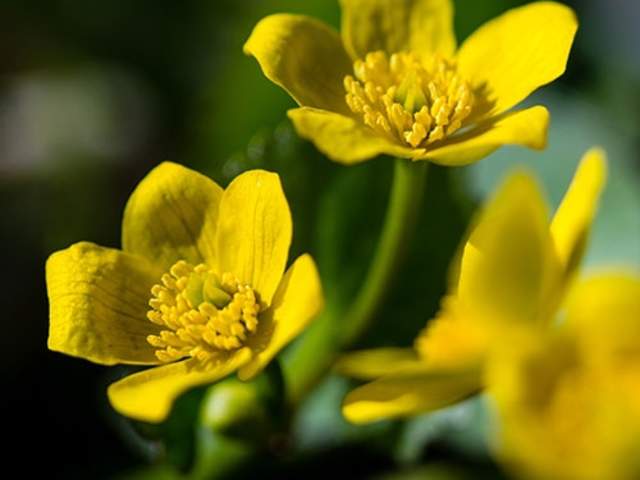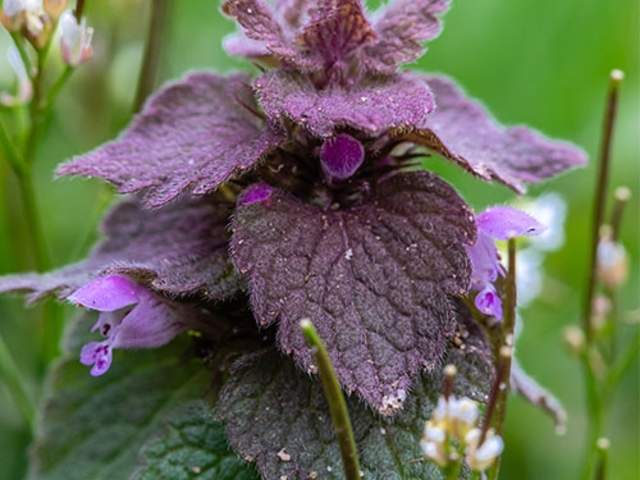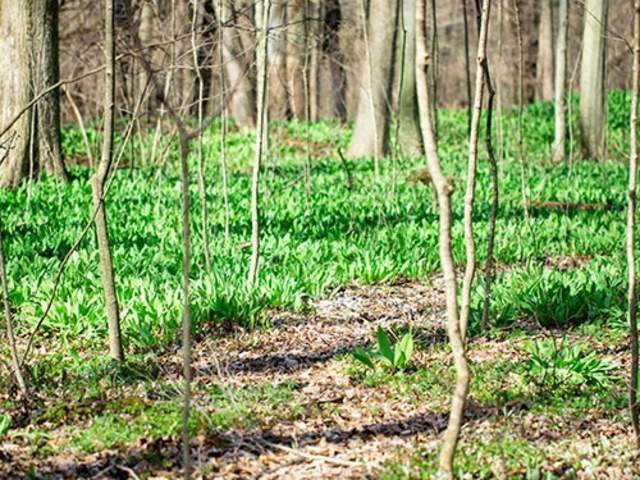Indiana Dunes Flower Quest—APRIL
Spring is truly a magical time at the Indiana Dunes, full of colorful wildflowers bursting like fireworks all across the region! But you’d better act fast—these natural beauties bloom in spring and quickly fade in the summer foliage.
How many of these fleeting wildflowers can you find? We’ve created an online reference below for you to track your progress. In the interest of being environmentally friendly, we encourage you to keep a mental note of your progress or take notes using your smart phone.
![]()
Be sure to tag @indianadunes and use #dunesflowerquest.
Need some help identifying your discoveries? Try identify.plantnet.org.

Bloodroot
Fun Facts:
Named for its red juice, this flower is the only species in the genus Sanguinaria, and it grows only in North America. Native Americans used the juice of these plants as a paint and dye for fabrics. Ants are attracted to the flower’s seeds and help to spread them, but humans should be very careful–these lovely plants are poisonous!
Reference the Quest Map to help guide you to this flower.
Cutleaf Toothwort
Fun Facts:
These delicate plants have a lovely fragrance, and you have to act fast to spot them: they have only a two-week blooming period before the leaves return to the trees above them and block their sunlight. They are a favorite food for mice!
Reference the Quest Map to help guide you to this flower.

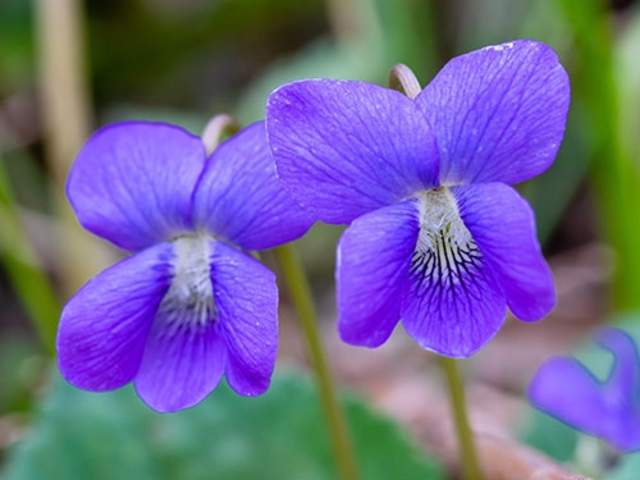
Dog Violet
Fun Facts:
Do you know how this plant got its name? It’s called a “dog” violet because it has no scent, unlike its cousin, the “Sweet” violet! That seems unfair for such a lovely flower. The different varieties of violet mate together very easily, so you are likely to see many hybrids.
Reference the Quest Map to help guide you to this flower.
Dutchman’s Breeches
Fun Facts:
It’s easy to see how these distinctive white flowers got their name: they look just like small upside down pairs of pants! While commonly white, they sometimes also have pink flowers. While bumblebees love these plants, they are quite toxic. In fact, one of their common names is “Little Blue Staggers,” for the effect they have on unlucky cattle that graze on them!
Reference the Quest Map to help guide you to this flower.
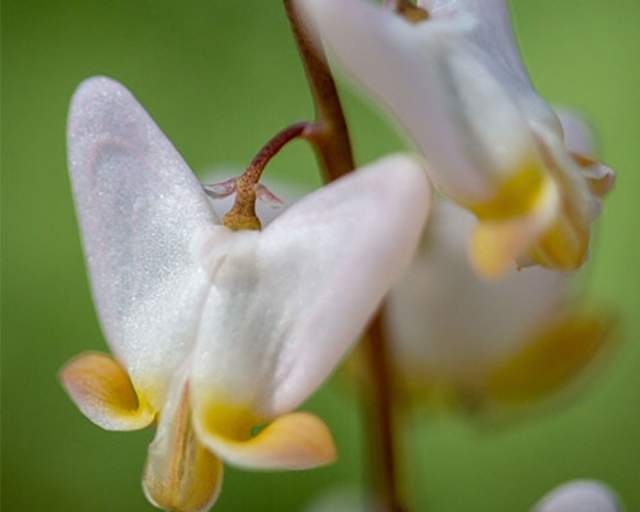
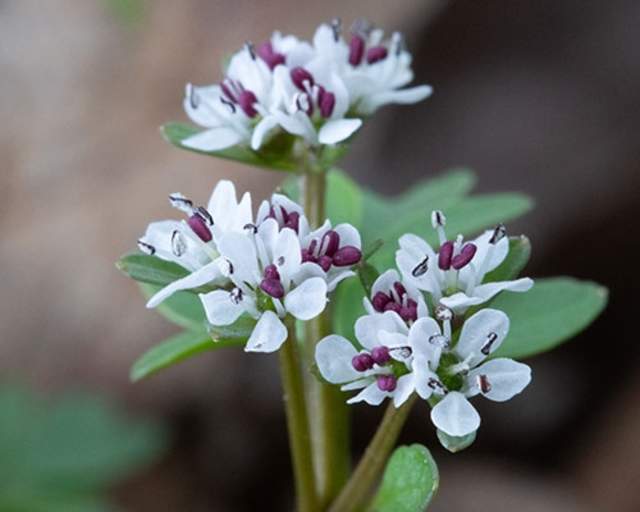
Harbinger of Spring
Fun Facts:
This tiny flower is one of the early blooms—a sure sign that spring is on the way! While common in the Indiana Dunes area, they are protected as state endangered plants in New York and Wisconsin. It’s also called a Salt and Pepper Plant because of its distinctive white and purple coloring, and it’s actually part of the carrot and parsley family!
Reference the Quest Map to help guide you to this flower.
Hepatica
Fun Facts:
Hairy stems! Long fine hair grows along the stems of these lovely early bloomers. But what’s even more remarkable is that these welcome spring beauties are actually evergreens, with their leaves darkening throughout the winter!
Reference the Quest Map to help guide you to this flower.

Meadow Buttercup
Fun Facts:
These flowers bring a lot of folklore with them! Known as “crazyweed,” legend has it that smelling the flower can cause insanity! It is also known as “blister plant” for the effect it has on the poor cattle unfortunate enough to graze on it!
Reference the Quest Map to help guide you to this flower.
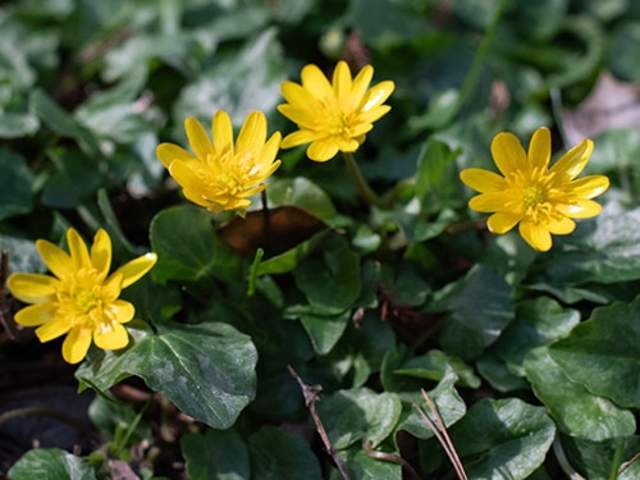

Meadow Cress
Fun Facts:
Another name for these European natives is the “cuckoo flower.” Some say it’s because they would bloom at the same time that cuckoo birds returned to Great Britain. They also attract a number of species of bees, including cuckoo bees! Their cup-shaped flowers have also earned them the name “Lady’s smock.” Legend has it that picking them is unlucky, so remember only to take pictures!
Reference the Quest Map to help guide you to this flower.
Moss Phlox
Fun Facts:
This hardy flower is also called “creeping phlox” as it forms a thick matted groundcover. The word “Phlox” comes from the Greek word for “flame”—given to plants of this species because of the brilliant color of their flowers.
Reference the Quest Map to help guide you to this flower.


Northern White Violet
Fun Facts:
This very small flower will require special attention to spot. Luckily, these lovely flowers have a long blooming season. They also emit a sweet fragrance and attract a number of pollinators–and people on the Dunes Flower Quest!
Reference the Quest Map to help guide you to this flower.
Prairie Trillium
Fun Facts:
Look carefully for the three maroon petals of these native flowers. The flower of these plants is eventually replaced by a dark-colored berry. So not much to attract pollinators! Luckily, ants help to spread their seeds, and even deer that like to graze on them.
Reference the Quest Map to help guide you to this flower.
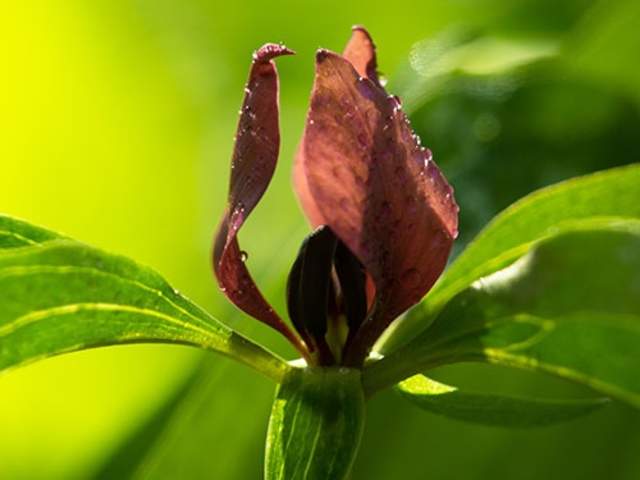
Skunk Cabbage
Fun Facts:
These incredible plants emit an odor that gives them their name (Phew!), but that same odor also attracts the flies and insects it needs for pollination. Even more impressively, these plants generate their own heat, melting the snow around them as they begin to bloom in spring!
Reference the Quest Map to help guide you to this flower.
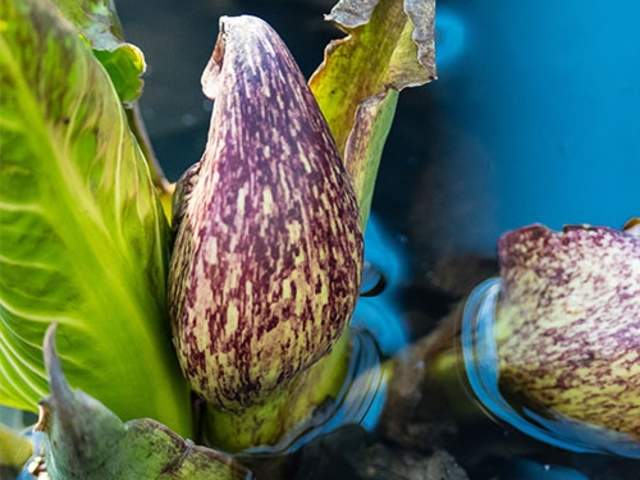
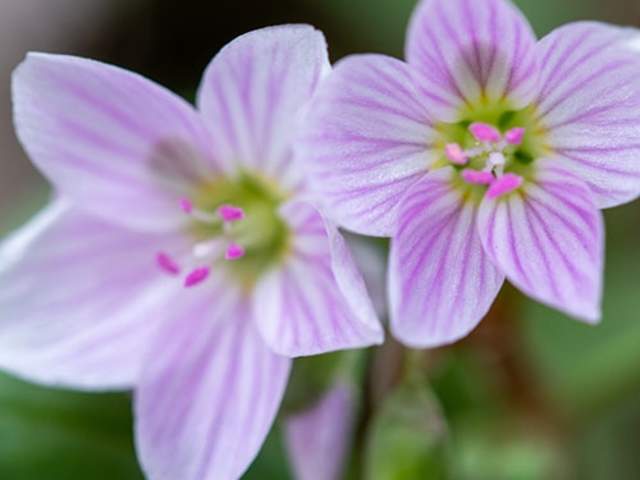
Spring Beauty
Fun Facts:
The individual flowers bloom for only three days. Look for the beautiful pink stripes on the white flowers. On cloudy days, the petals will close and the flowers “bow,” but they raise and open their petals in the sunlight!
Reference the Quest Map to help guide you to this flower.
Wood Anemone
Fun Facts:
With their slender stalks, these plants have also been called “wind flowers” for the way they move in the breeze. The flowers can be pink or white, and in spite of their beauty, are quite toxic. Wood Anemone is often confused with False Rue Anemone, which does not have a whorl of leaves under its flowers.
Reference the Quest Map to help guide you to this flower.
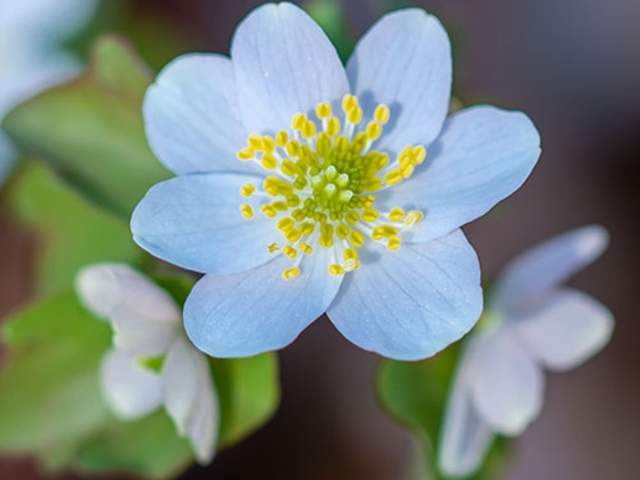
A Note on Invasive Wildflowers
The Indiana Dunes are home to so many beautiful wildflowers. Unfortunately, not all of them belong here. Over the years, non-native species have taken root in the region, crowding out native species that are crucial for supporting fragile ecosystems. The parks, non-profit organizations, and volunteers work diligently to restore these areas.
If you spot an invasive species, please leave it be: it takes careful oversight to remove these plants without damaging the area, and poison ivy, ticks, and sometimes even toxins from the plants themselves can be a hazard.

Gill Over the Ground
This plant has many names, including ground-ivy, creeping charlie, alehoof, catsfoot, field balm, and run-away-robin. It was even known as “ale ivy” because it was used in beer! It is a non-native, invasive plant in the U.S. And as anyone who’s had this in their yard might know, it has an extensive root system that crowds out other plants and makes it quite tough to pull!

Scilla
These blue-flowered plants are part of the lily family, and small patches have generally been found at the bases of trees at the Duneside Shelter in the Indiana Dunes State Park. These non-native plants were brought over from Europe as ornamental plants many years ago, and then spread from the manicured gardens where they began.

Small-Flower Crowfoot
These small flowers are part of the buttercup family, and are also commonly known as “kidneyleaf buttercups” because of the shape of the basal leaves on the long stalks at the base of the plant (not the stem). Their petals are some of the smallest of all the buttercups. Oh, and don’t let the name “buttercup”fool you: these plants are toxic!
Ranger Kim with Indiana Dunes National Park leads a hike down the Heron Rookery Trail during the amazing wildflower bloom. Learn how to identify wildflowers and discover the mystery of the…
More Things to See & Do
Outdoor Adventures
Shaped by nature, made for adventure. In the Indiana Dunes, it’s all about fun times and tan lines—from…
Dunes Deals
Shake off the sand south of the Indiana Dunes! Dig up real savings with Indiana Dunes Deals and make the most of…
Indiana Dunes Shop
Don’t just experience the Indiana Dunes; take it home with you. Find your new favorite T-shirt, hoodie, or…
Pet Friendly
There’s a reason Indiana Dunes National Park was named the #1 pet-friendly attraction in the state of Indiana…
Arts & Entertainment
It’s not all sand-fringed lakes and epic sunsets. Here, you’ll find a vibrant arts scene stoked by a…
Drop-in Volunteering
Be the Change — Volunteer! Get more involved with the Indiana Dunes!
The story of the monarch butterfly is one of incredible transformation and epic travel. We are also part of this adventure, and each of us can play a key role in the survival of the monarch…
Plant Your Own Monarch Garden


15% Off
Applies to native plants and monarch butterfly plants. Valid on regularly priced plants, shrubs, and trees only. Show this coupon at the register.
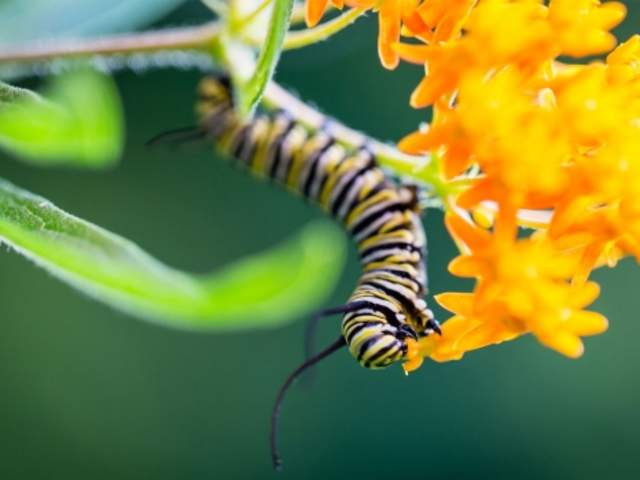

15% Off
Applies to native plants and monarch butterfly plants. Valid on regularly priced plants, shrubs, and trees only. Show this coupon at the register.
Book a Place to Stay
Bed & Breakfasts
Feel like family with intimate accommodations that range from nature-inspired retreats in the woods…
Hotels & Inns
A convenient stay located near downtown? What about a country retreat heaped in Old World charm? Or…
Tales from the Dunes
Indiana Dunes Blog
Indiana Dunes National Park is 5th in the nation for biodiversity. That’s more than Yellowstone, Grand Teton, and the Everglades. Read more about monarchs and other diverse flora and fauna.
Sounds of the Prairie at Kankakee Sands
- 3 minute read
This spring and summer, I have been enjoying the call of the grasshopper sparrow—a dry, insect-like buzz that…
Conquer the Diana Dunes Dare: Hiking Adventure and Ghost Story at Indiana Dunes National Park
- 3 minute read
Have I got a dare for you… complete with physical challenges, scenic views, and even ghost stories! Sound…
Spotlight on Wetlands and the Virginia Rail
- 5 minute read
Spring has sprung and that means our Kankakee Sands wetlands are teeming with activity. The Kankakee Sands Bird…
Why We Should Try to Appreciate Spiders
- 5 minute read
Did you know that the first week of April is National Be Kind to Spiders Week? To be kind to spiders (that is, to…
Interesting Facts About the Indiana Dunes
- 6 minute read
There's more to the Indiana Dunes than warm sand, blue water, and miles of hiking trails. For example, as of…

